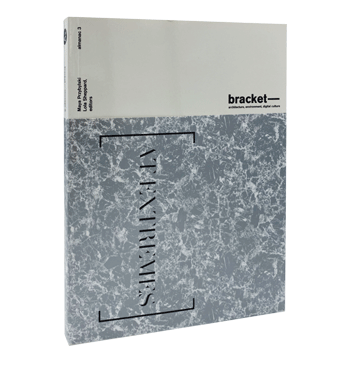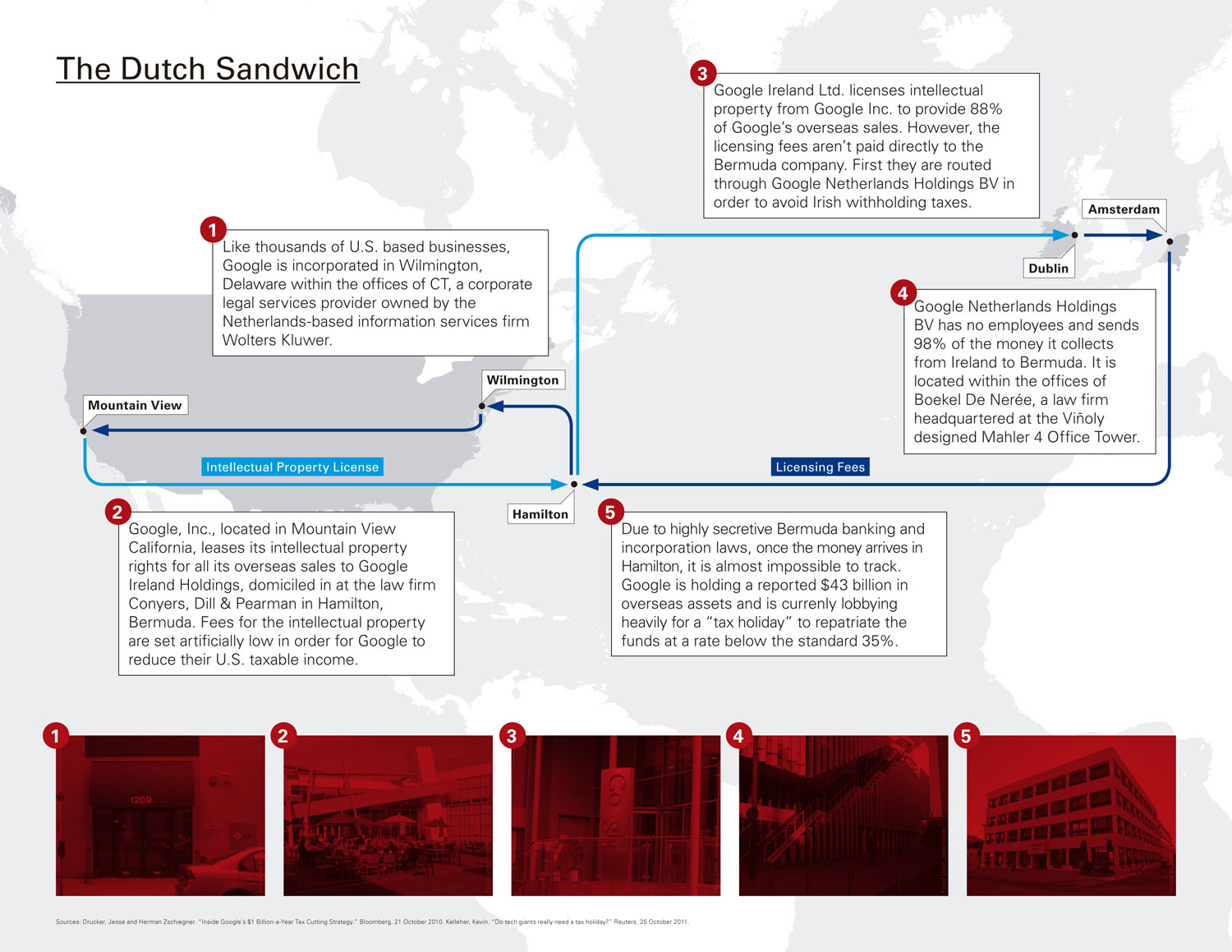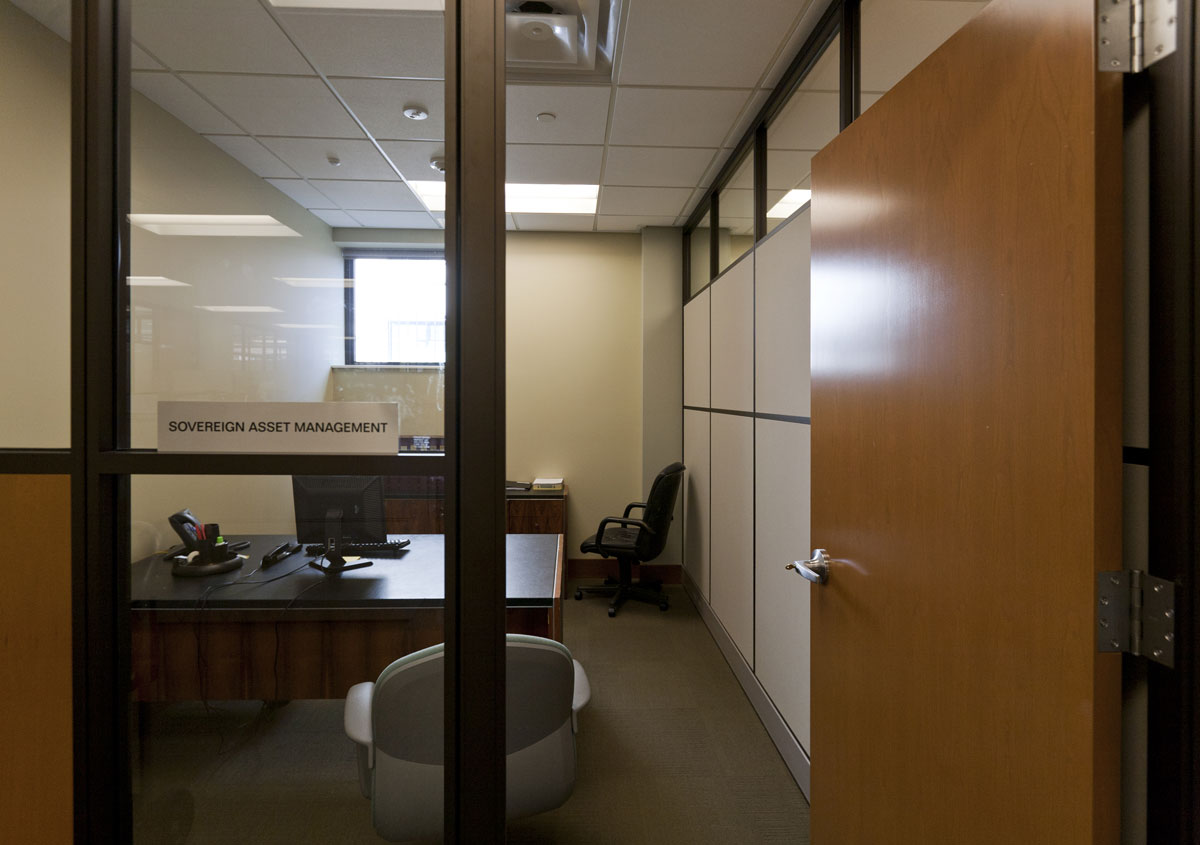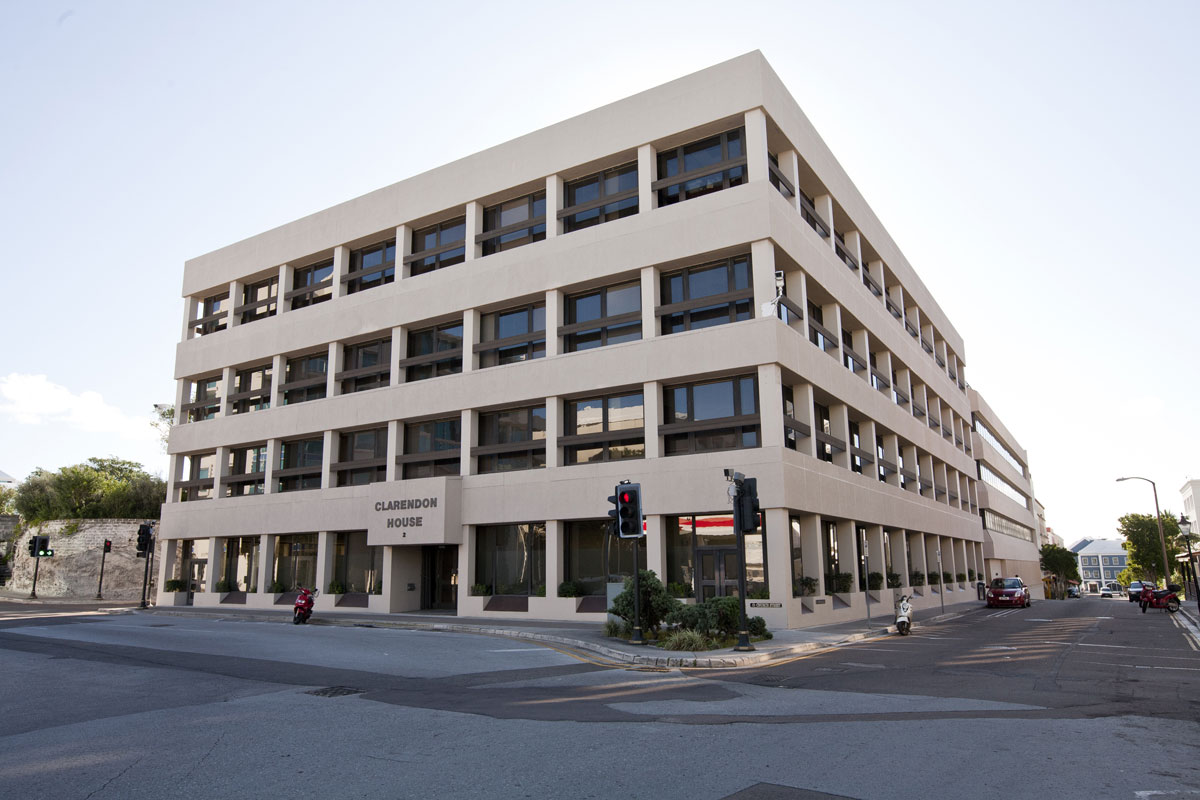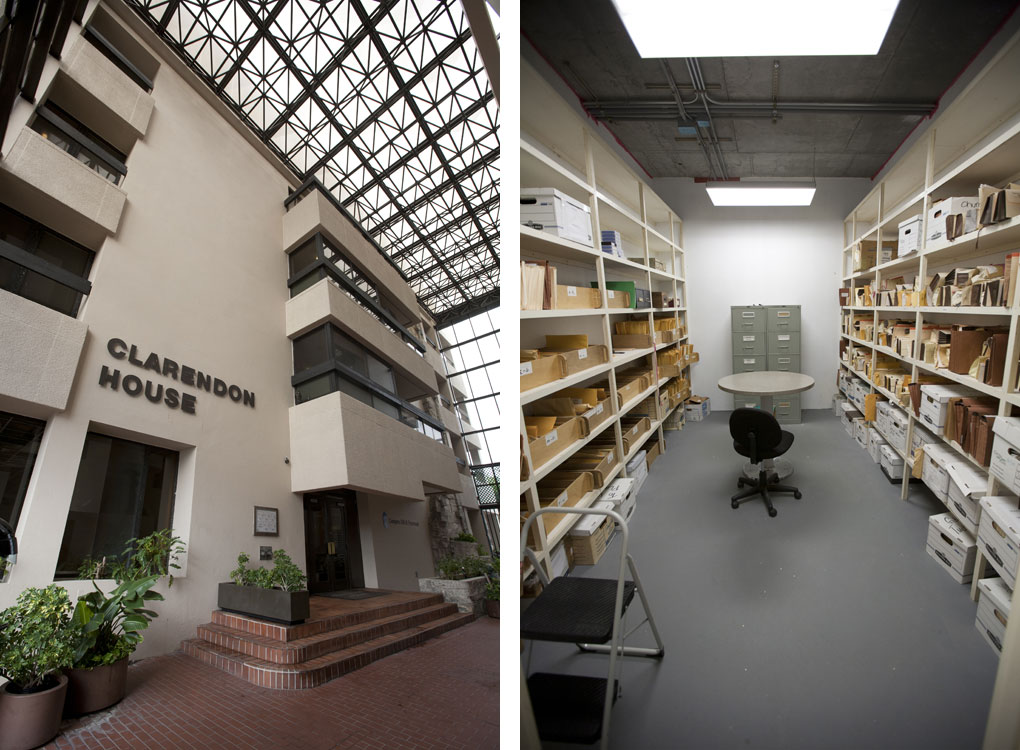The primitive hut can be understood as a foundational concept for architectural development, one predicated on providing a minimum amount of shelter from the environment. On the other hand, the globalized system of international finance and capital movement also deploys the shelter, although in a much more sophisticated and nuanced manifestation, serving however, essentially the same purpose. The dispersed factory and the economic zone have become symbolic of global markets, capital at its most efficient. This essay tracks and interrogates their flip side, the tax haven. Understood within the rubric of globalization as a site of modern labor and production, the tax haven embodies more than just an expansion of global markets, it embodies the ethos and aesthetics of financial and intellectual production.
A Not-So-Primitive Hut: Tax havenry as a spatial practice
It would not be a stretch to say that the history of civilization runs concurrent with the history of taxation. For as long as there have been forms of governance, there have been ways to levy taxes in support of them. No government works for free and every empire needs its roads. In the same breath, we can also say, as long as there have been systems of taxation, there have been those trying to undermine it.
The Dutch Sandwich
Today, the practice of tax havenry has become a distinctly spatial practice. Increasingly instantaneous technologies of communication, complex international juridical structures, inter-governmental competition, and the lack of a supranational sovereign power contributes to making the practice of tax havenry a commonplace occurrence in the global business world.[1] This practice is a derivative of the larger spatial logic practiced by contemporary multinationals, that of outsourcing. This logic understands business as a set of activities to be partitioned, understood separately, and optimized to the fullest extent possible in radically different, customized spaces. This logic allows for businesses to be physically located wherever they want, moving their legal and financial incorporation to nations whose juridical structures have been specifically designed to incentivize such behavior.
The tax haven[2] exists at the extreme edge of globalization and international monetary flows, displacing national systems of taxation and decentering standard business practices. The tax haven can be thought of within similar systems of labor and capital displacement as the maquiladora, the special economic zone, and the territorial lease.[3] The tax haven is the ur system that allows all of these spatial and political anomalies to exist. The tax haven is the extraterritorial enclave reduced to an address and a series of filings within a sea of paperwork sitting in the basement of a non-descript offshore law firm. The address is of course crucial to the entire equation. The tax haven is twinned with architecture and the two implicitly support each other. Capital needs an address to aim for, it needs a shelter. The territorial aspects and juridical inconsistencies are just as important as the filing cabinet and the mailing address.
Almost by definition the tax haven is a small territory, often either an island, or a nation that operates as an island. The Cayman Islands, Bermuda, Jersey, Luxembourg, and Singapore are all notorious tax shelters. But, in a way, so is the island of Manhattan and the City of London, that strange city within a city entirely claimed by London’s financial services industry. Each financial center is just one node within the global, decentered network of finance, banking, production and the services that maintain them. The tax haven is a well-worn trope within the public imagination, often thought about within the context of drug money laundering, mob activity, weapons financing, terrorism, clandestine operations, and other nefarious activities. The less exciting truth is that tax havenry is simply an accounting method. It is standard business practice for most large, international corporations. Indeed, the practice of establishing an offshore tax structure is international business. They are one and the same. And perhaps most importantly, there is nothing illegal about it.
The revelation that presidential candidate Mitt Romney is a habitual tax avoider and patron of tax havens is greeted by the news media with both condemnation and acclaim. He is both vilified for neglecting his social responsibilities, and celebrated as a shrewd businessman, the new ethical model for how a contemporary citizen should act. This recently enflamed debate, however, signals that taxation, as a central political question, mediating individual and collective interests, is again an existential question for our democratic society. As architects, this terrain appears beyond our commonly accepted field of expertise or area of concern. But by examining the tax haven as a spatial type that is intimately connected yet publicly distanced from the more visible corporate headquarters, we will show that architects are implicated in this debate by designing the spaces necessary for the functioning of tax havenry and by lending their symbolic capital to corporations who practice it.
The Dutch Sandwich
In a widely discussed New York Times article published in March of 2011, it was reported that General Electric, stalwart of the American image and economy, earned $14.2 billion in profits. Of that, $5.1 billion were reported from its domestic operations. And as April 15th approached, a day of fear and anxiety for many Americans, it appeared their total tax liability was not just zero, but G.E. had managed to claim a $3.2 billion tax benefit.[4] John Samuels, head of G.E.’s tax department and former treasury department official was able to effectively flip their tax liability by funneling their corporate profits through a series of tax breaks and legal tax avoidance legislation towards offshore financial centers specifically established for companies and wealthy individuals to avoid taxation.
A few months earlier Jesse Drucker, a reporter from Bloomberg News who often writes of corporate tax evasion, broke a similar story concerning Google’s tax avoidance techniques. Through a sophisticated tax maneuver colorfully known as the “Dutch sandwich” or “double Irish”, Google, whose (unofficial) corporate slogan is “don’t be evil”,[5] has managed to reduce its tax liability by $3.1 billion over the last three years by reducing its overseas corporate tax rate to just 2.4 percent. By contrast the US corporate tax rate is 35 percent and in the United Kingdom, Google’s second largest market by revenue, it is 28 percent.[6]
Global headquarters of Sovereign Asset Management within the offices of the law firm Wakefield Quinn, Hamilton, Bermuda
The process of setting up international subsidiaries and moving capital across several different sovereign jurisdictions is, by necessity, highly complex and confusing. Taxation, as it is currently structured in the United States, is predicated on a notoriously complicated tax code set up to create small widows where enormous amounts of money can easily flow. These small windows where laws misalign and tax codes become blurry, are where the tax policy of the United States seamlessly blends into a spatial network of offshore banking and finance.
Spatial Logics of the Googleplex
By now, it’s almost common knowledge that Google is symbolically headquartered at the GooglePlex in Mountain View, California, in the middle of Silicon Valley. The core of the Googleplex is the former SGI Graphics campus, purchased by Google and retrofitted in 2003 by Clive Wilkinson Architects. The Plex, as it is known, is the most famous of tech campuses; it is an architectural manifestation of the Silicon Valley image and philosophy. Cafes occasionally interrupt open, vibrant workspaces where workers sit atop rubber exercise balls. Employees are encouraged to take advantage of the Plex’s numerous gyms and workout facilities, as well as the free laundromat. Within GooglePlex, work is now overcoded with “experiences.” The once holy separation of the work-life dichotomy, not to mention the eight-hour working day, is effectively shattered in this supposedly relaxed and creative environment.[7]
Googleplex interior
What matters at the GooglePlex is on the inside; its exterior is rather unremarkable. Its green spaces, eating areas and corporate sculptures are altogether not out of place in the typical corporate campus. This absolute emphasis on the interior, with near total disregard for the exterior, marks a pinnacle in the development of corporate architecture since its shift away from designing for Fordist models of production. The heroic architect, as embodied in figures like Kahn, van der Rohe, and Bunshaft is here replaced with the heroic interior architect, Clive Wilkinson. Consequently, the model of the corporate campus is accepted as is, and is simply retrofitted. Somewhat paradoxically, it’s Google’s concentration on the interior, its focus on human relations and the materialization of a post-Fordist model of production, which becomes its representation to the exterior.
The formal design of the GooglePlex produces symbolic capital for Google. Its place-making and architecture communicate its corporate philosophy of focused, yet emancipated creativity, its desire to foster a horizontal, less hierarchical workplace organization, and its quasi-spiritual “Don’t Be Evil” ethic.[8] However, this contemporary model displaces and attempts to cover over some of the less-savory practices of business that must still go on in the pursuit of profit. While Google may be spiritually domiciled at the Googleplex, its true heart lies in a stodgy law firm taking up three floors of a converted parking garage in central Hamilton, Bermuda.
Paradis Fiscal
Bermuda markets itself in the traditional manner of an island paradise. Almost by definition, it sits counter to the image of a metropolis. Beautiful beaches line its shores, luxury yachts fill its harbors, and its picturesque Front Street is lined with palms and pastel-hued colonial style buildings. There is even a contented, easy-going character to the islands’ business culture, known for their infamous Bermuda shorts. Outside the tourist set, Bermuda also markets itself as a paradise by way of the French term for tax haven, “paradis fiscal.” The island is a paradise for capital. Financial profits from around the world are legally funneled here in order to avoid the burden of taxation from “high-tax jurisdictions” located onshore. This paradisiacal relationship to international business centers makes the sleepy capital of Hamilton one of the most important financial outposts in the world.
Bermuda is technically an Overseas Territory of the United Kingdom located in the middle of the Atlantic Ocean over 1,000 km from the nearest land mass, yet it is easily reachable by plane from either New York or London. As an Overseas Territory, it is able to craft its own internal laws while benefitting from a close economic relationship and the protection of the UK. This island nation, with a population of 60,000 is home to nearly 20,000 corporations, the overwhelming majority of them foreign-owned. Business legislation in Bermuda has made this corporate friendly attitude into public policy with the creation of a special entity: the foreign-owned, Bermuda domiciled corporation. Consequentially, the island nation is now home to a wealth of expertise with regards to the founding and operation of these special entities. As a result, three-quarters of the top 500 U.S. companies have captives and subsidiaries domiciled in Bermuda. The benefit these companies receive includes no corporate income tax and strong secrecy laws, allowing money to easily enter, and be hidden from outside oversight.
There are, however, minimum requirements that companies must fulfill to be in accordance with Bermuda’s incorporation laws. It is within these laws where the formal language of the tax shelter manifests itself in very subtle architectural details. Importantly each business is required to maintain a registered office. Yet this office is almost always that of an acting agent, designated by the subsidiary, usually a law firm. By law, the acting agent for one company can be the same for an unlimited number of other subsidiaries. Following this logic, a single office space can be the head office for thousands of Bermuda-domiciled subsidiaries of multinational corporations. And indeed, this is exactly what happens. The address for one business is that of thousands of others, reducing the technical office space to the width of a piece of paper, slipped into a filing cabinet and stored onsite.
The largest and most prominent of the Bermuda law firm-cum-subsidy magnet, and Google’s firm of choice, is Conyers, Dill & Pearman (CDP). Their worldwide headquarters occupies all five floors of the Clarendon House, at the corner of Par-la-Ville Road and Church Street in central Hamilton (CDP’s own subsidiaries also occupy the building). The Clarendon House is rather mundane, a 60,000 square foot concrete and steel building which previously held a warehouse, auto showroom, and parking garage. Purchased by CDP in 1980 it was renovated and redesigned by Fraser Butterworth, a British expat architect and, at the time, partner-in-charge of the local firm OBMI. Headquartered in this building is Google Ireland Holdings, the subsidiary that, in effect, is the end-of-the-line for Google’s worldwide profits.
Aside from the stucco façade renovation, the main architectural feature of the Clarendon House is its outdoor atrium, connecting its southern face with the Bank of Bermuda (now HSBC) headquarters. The atrium, first of its kind on the island, symbolically and literally unites the financial and juridical forces into one shared corporate space. Shielding the shared atrium from the Bermudian climate, the techno-enclosure is covered in a rather inelegant space-frame structure, disguising its short span necessities with open-space structural solutions. Atop the frame are inset solar-tinted polycarbonate pyramid-shaped panels. Access to the space is controlled by a steel gate, closed outside of office hours, and topped with polycarbonate facades built to withstand hurricane-force gales. Inside the atrium, sculptures and plastic plants occupy the controlled environment, proposing a shared space with benches and seating, but in actuality providing little more than a back door to both buildings. As a designed space, the atrium defies the circulatory and logistic needs of the buildings, yet unites it with other such spaces that have become to symbolize a specific formation of global financial architecture.[9]
The redesign took advantage of the structural steel skeleton of the existing building, necessary for the housing of large quantities of paperwork and filing cabinets. The major design moves included adding a fourth and fifth floor in addition to the complete façade makeover. At the time of renovation, CDP had over 50 years of experience practicing tax law in Bermuda and were able to pair this experience with specific needs in running an international firm dedicated to foreign domiciled companies.
If the interior design of the Googleplex embodies the image of Silicone Valley and its entrepreneurial spirit, the Clarendon House is a physical manifestation of the spatial production of global finance. While the GooglePlex is organized according to a contemporary, post-Fordist model of production, the Clarendon House is organized specifically according to the local legal regulations and requirements that allow global finance to sidestep the inconvenience of taxation. The Clarendon house is an amalgam of the sparse efficiency of the parking garage, matched with the wood panels of the corporate boardroom, effectively becoming a parking garage for international business.[10]
The interior layout of the office follows the logic predetermined by Bermudian subsidiary law. Of the few restrictions, the most prominent is a requirement for each domiciled business to hold annual board meetings at their address of domicile. The core and shell building has been fit with numerous board rooms allowing for many of the thousands of domiciled companies to fulfill their annual requirements at any one time. The boardroom thus becomes the major organizing principle of the Bermuda law firm. Quite often firms have entire floors given up to rows of boardrooms,[11] each wrapped in sound insulating materials,[12] and fitted with high-speed data connections to enable trans-global board meetings between local lawyers and representatives on site with CEOs in other global cities. Occupying a central location both in its physical layout and its spiritual raison d’etre, it is possible to understand the remaining spaces of the firm in service to the boardroom. Along with the overwhelming presence of the boardroom, there are other companies that need a more permanent and private “headquarters.” The result is little more than a small room outfitted with a computer and telephone, the sign on the door noting the particular firm who has it reserved for the time being.[13]
There is one last architectural trace of the existence of the giant multinational subsidiaries inhabiting these small offices: the vault. The Clarendon House, like other law practices in Bermuda, must keep a physical paper trail of its subsidiary documentation. Located deep beneath the Clarendon House is a room surrounded by 1-meter thick concrete walls housing important papers, servers and back up data. The vault is, in essence, the end of the paper trail starting in Mountain View, and countless other offices worldwide. The logistics of the tax shelter is that of file management and proper data organization and it comes to rest in a subterranean vault impervious to natural disaster. The vault provides a secure storage facility but the fault lines of tax law are located within the documentation it contains. And it is these very fault lines that are exploited to the tune of billions of dollars in taxes deferred.
Globalized Spatial Practices
A spatial analysis of the contemporary multinational corporation produces a reading of the principal spatial logic through which it operates, that of outsourcing. The tax haven is a radical spatial product of this very same logic. The accounting and financialization of a multinational’s books is effectively outsourced to other jurisdictions, like Bermuda that can optimize them for the sake of efficiency. From the perspective of capital, this outsourcing efficiently minimizes the “friction” created by taxation and allows capital to finance business operations without the “burden” of regulations. In order to outsource these ephemeral monetary flows, however, physical traces must exist, and in the case of Google, the Clarendon House stands as that trace. In this banal office building on an island outpost in the Mid-Atlantic, Google effectively dodges U.S. taxation, making it a highly significant node in Google’s global network of production.
At the same time the spatial practice of outsourcing is creating globally dispersed nodes of production, it is also producing global centers of command, which are irrevocably linked to each other. The GooglePlex and Clarendon House, seen from this perspective, are both spatial products of one and the same spatio-finanical practice. This realization allows the two to be understood as equally important spatial manifestations intrinsically linked in the multinational corporation’s efforts to reproduce capital, albeit with different roles to play in this pursuit.
The GooglePlex operates as the symbolic headquarters of Google. It represents a climax in the spatialization of the early twenty-first century model of production, one predicated on intellectual capital and the production of intangible services. Its formal aesthetics embodies the “turning inwards” of capital after the fall of the Berlin Wall and subsequent collapse of the Soviet Union.[14] This is evident in the triumph of the interiors architect, Clive Wilkinson, in producing what is arguably the most significant corporate space today. Paradoxically, it is this intense focus on the “interior” that becomes Google’s most symbolic and iconic representation towards the outside; the GooglePlex is Google’s symbolic capital produced in space.
In contradistinction to its main headquarters, the Clarendon House is decidedly not iconic; it possesses no symbolic capital whatsoever. The Clarendon House, however, functions differently, but on an equally important level as the GooglePlex, sheltering the companies’ foreign revenue from U.S. taxation. The less-savory financial maneuvers of Google are here displaced from the highly visible landscape of Silicon Valley, to the much more confidential space of Bermuda, drawing little attention from the public and leaving Google’s public image unsullied. In addition, the Clarendon House is structured and organized in order to directly service these less-savory functions, materializing the legal structures that make tax havenry possible; it is an opportunistic architecture geared towards circumventing legal structures.
The Clarendon House, Central Hamilton, Bermuda. Home to thousands of corporate subsidiaries
These two spaces, each a corporate utopia in their own right, are in fact sides of the same coin and must be examined as existentially linked spaces. As a utopian space designed exclusively for the circulation of capital, the tax haven is an archetypal space of capitalist globalization. And while the effects of outsourcing labor and production can be examined within the rubric of logistics and urbanism, so too must the practices of outsourcing of accounting and legal representation, for these practices have their own forms of urbanization and architectural development.
Left: Atrium connecting the south façade of the Clarendon House and the former Bank of Bermuda building
Right: The Wakefield Quinn vault. The fireproof vault contains mostly subsidiary filing papers and deeds
Architecture, as it is deployed in the logistical maneuver of the tax shelter, shares a structural affinity with other typologies predicated on the movement of goods and services. The tax shelter is the financial equivalent of the commodity transportation center, or the bulk retailer. If the windowless cinderblock expanse of Sam’s Club is understood to be an iconic architectural representation for mass consumption, then the banal drop ceiling, beige cubicle, and wood veneered boardroom of international finance is the perfect expression of instantaneous capital transaction. Neither wants to draw attention to their physical surroundings focusing solely on cheap goods and expert service. Yet, even in these stripped down, function driven spaces, architects still have a hand in making this world possible although the image of Architecture, as it is commonly deployed, is anathema to these spaces.
The specific logistical functioning of global finance might be outside what is commonly understood as the traditional design narrative. But global financial networks, and their many valences and repercussions, are designed objects, much like the corporate headquarters they stem from and offshore financial centers they come to rest at. And like all designed objects and spaces, architects and designers participate in their conception, implementation and legitimation.





